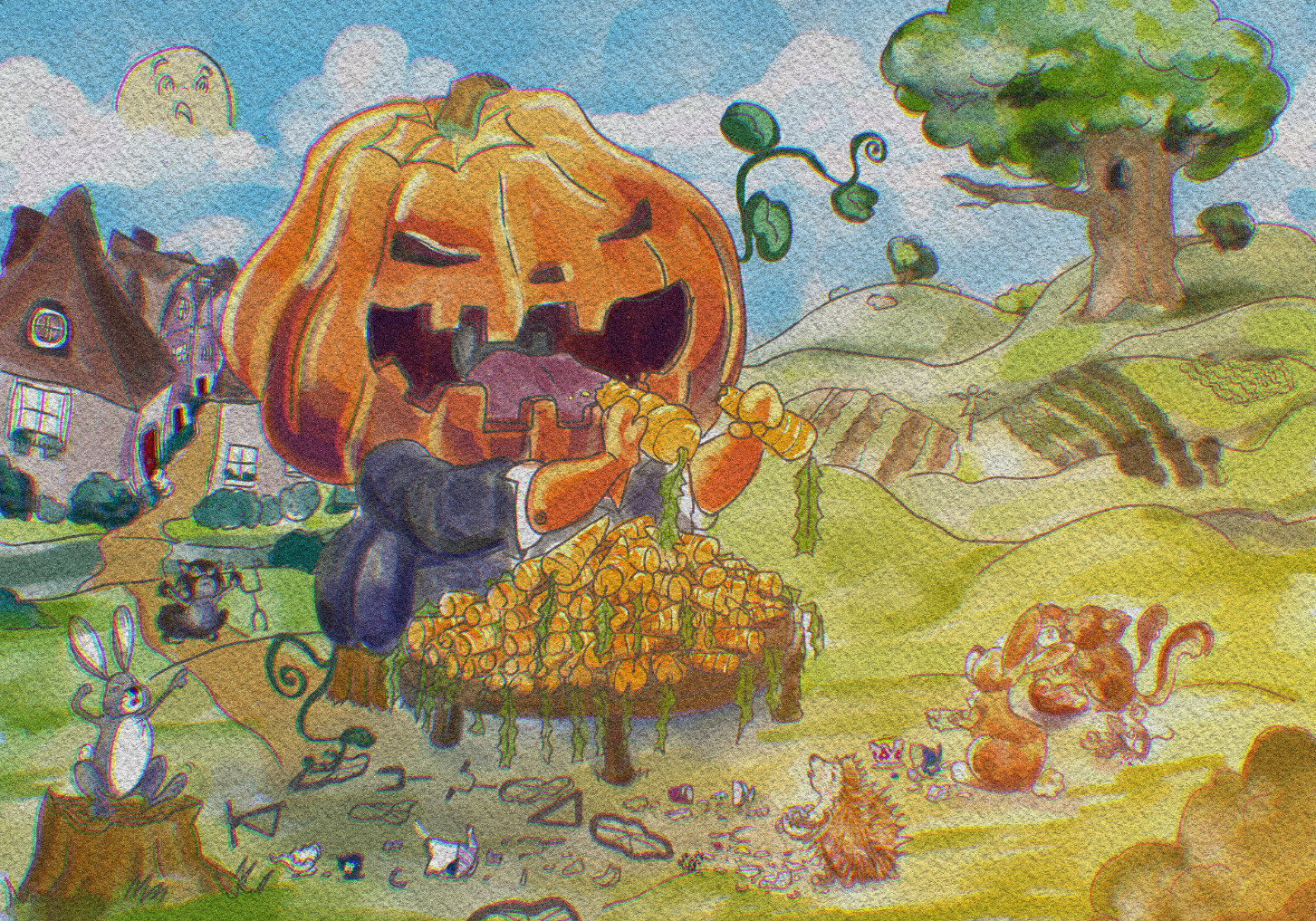The Beauty of Symbiosis: Insects & Flowers in Harmony
The Art of Pollination
Nature speaks in whispers. The flick of a wing, the slow unfurling of a petal, the hum of a body dusted in gold. Pollination is survival wrapped in beauty, an ancient agreement between bloom and insect. Not decoration. Not mere happenstance. But design. Purpose. Life itself.
A sunflower (Helianthus annuus) stands, its golden face tilted to the sky, a western honeybee (Apis mellifera) sinking into its core. Spirals tighten inward, numbers hidden in nature’s hand. The bee moves, unknowing yet essential, a courier delivering existence.
This dance of pollination is a story of coevolution, a process millions of years in the making. Flowers and their pollinators have shaped each other through time, forming an unbreakable bond of dependence. As biologist Christian Konrad Sprengel once observed, “Flowers are organs adapted in their structures to attract insects, which in turn aid in pollinating the plant.” This delicate balance between attraction and function is what ensures the survival of our ecosystems.
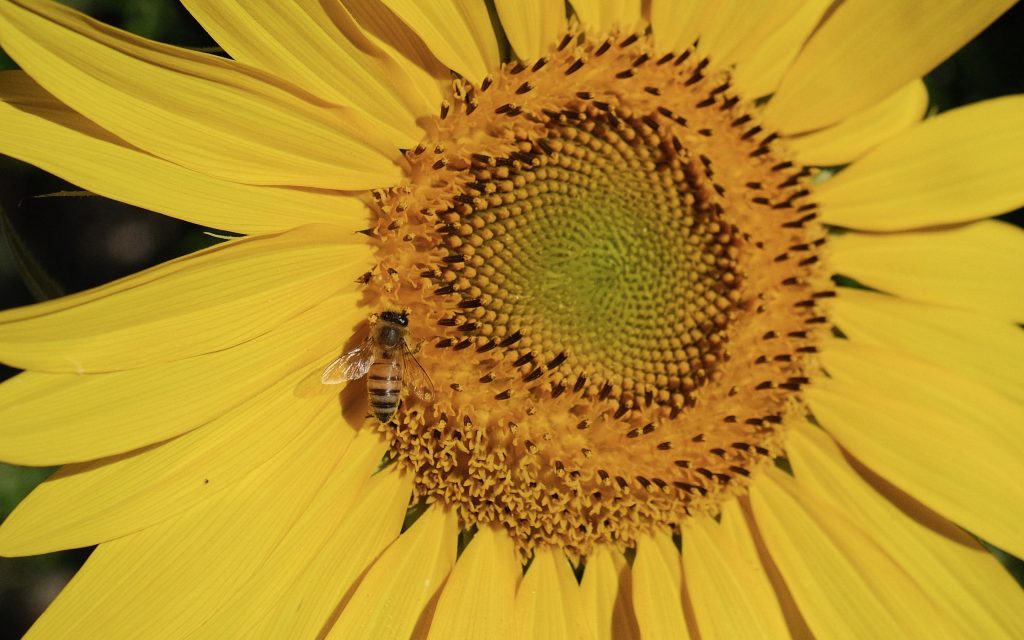
The Dance Between Bees & Flowers
Bees know no rest. Wings in motion, legs weighted with pollen, they chase the scent of nectar, lured by color, shape, the unseen call of the bloom. Each visit is a trade. Life and sustenance.
A Mexican sunflower (Tithonia rotundifolia), rocks softly beneath the weight of a visitor. A large carpenter bee (Xylocopa spp.), bent and furred, dives deep into the gold. The contrast—bright petal, dark form—a reminder of nature’s sharp precision.
Pollinators like bees bring more than beauty to our gardens—they sustain life itself. Yet their populations face unprecedented challenges. Climate change, habitat destruction, and pesticides threaten their very existence. A recent study revealed that air pollution disrupts floral scents, making it harder for insects to recognize and locate flowers. The loss of pollinators doesn’t just mean fewer flowers—it threatens entire ecosystems, communities, and human life.
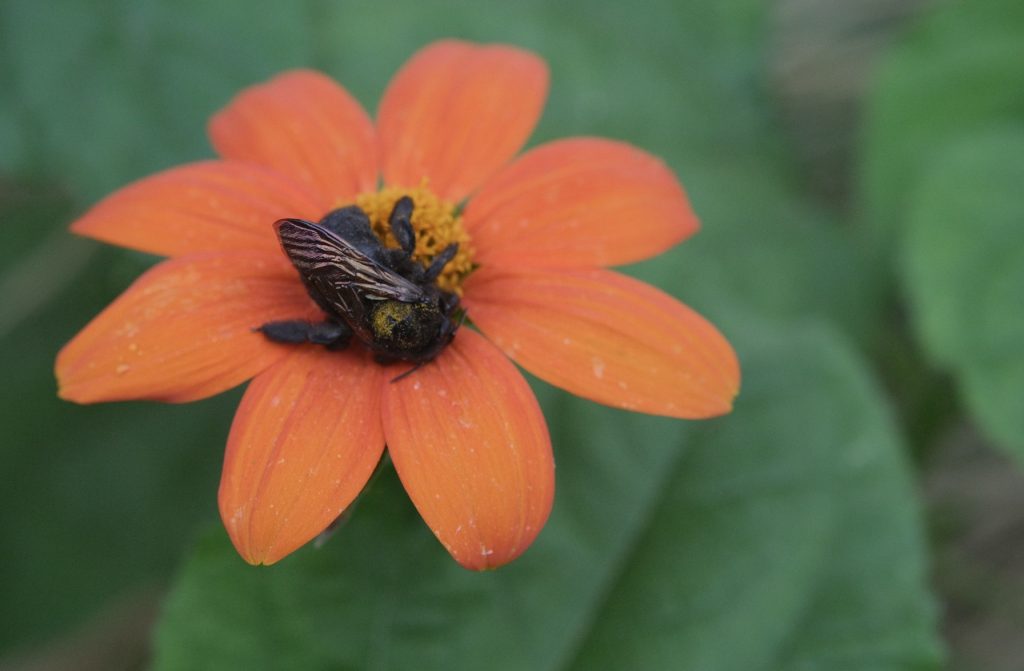
“Bees do not merely take; they give. Each visit to a flower is a moment of nourishment, a step toward renewal.”
The Lesser-Seen Pollinators
Not all pollinators wear the bright coats of bees. Some move in silence, unnoticed, but their role is just as vital.
In the quiet of a backyard, where the wind moves unnoticed through whispering leaves, another kind of pollinator waits. On the broad green surface of a passionflower (Passiflora spp.), a long-legged fly (Dolichopodidae), iridescent green and blue, clings to the veins of a leaf. A body no larger than a bead of dew, its presence is near invisible, but its task is immense. It feeds, moves, lands again—dusting pollen from plant to plant, weaving the unseen threads of an ecosystem that relies on the most delicate of hands.
Beyond bees and butterflies, beetles and ants also serve as pollinators, playing their own quiet role in maintaining floral biodiversity. Many flowers have evolved to cater to these overlooked workers, developing open, easily accessible structures and fragrant oils instead of nectar. Every pollinator, no matter how small, is part of our delicate symphony of survival.
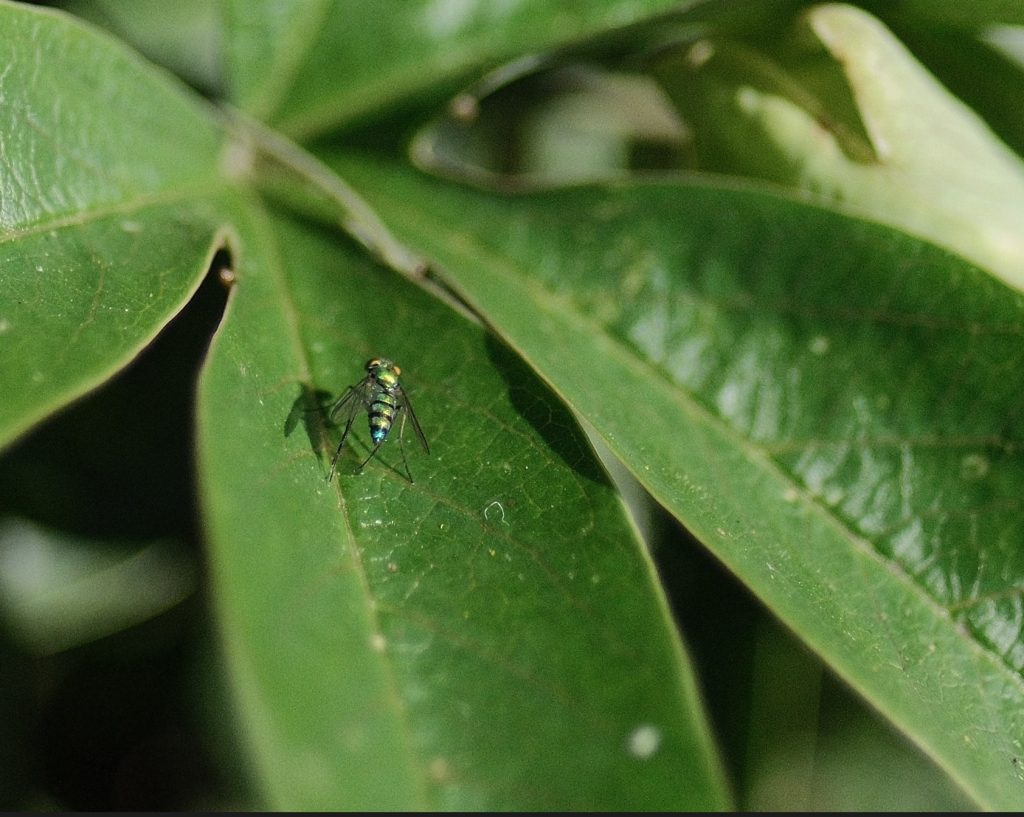
“Even the smallest beings have a role in nature’s symphony.”
The Aerial Ballet: The Monarch Butterfly
Butterflies drift, slow, deliberate, feeding and moving in the same breath. Monarchs (Danaus plexippus) are memory and movement, their migration a story written in the wind.
A monarch perches, its wings stained with amber and ink. The bloom it feeds from sways beneath the weight, giving as it takes.
Yet even these iconic pollinators face dwindling numbers. Habitat loss and climate disruptions have placed monarch populations in decline. Conservation efforts, such as planting native milkweed, are critical to ensuring their continued survival. Every flower they visit is a reminder of the delicate balance we must protect.
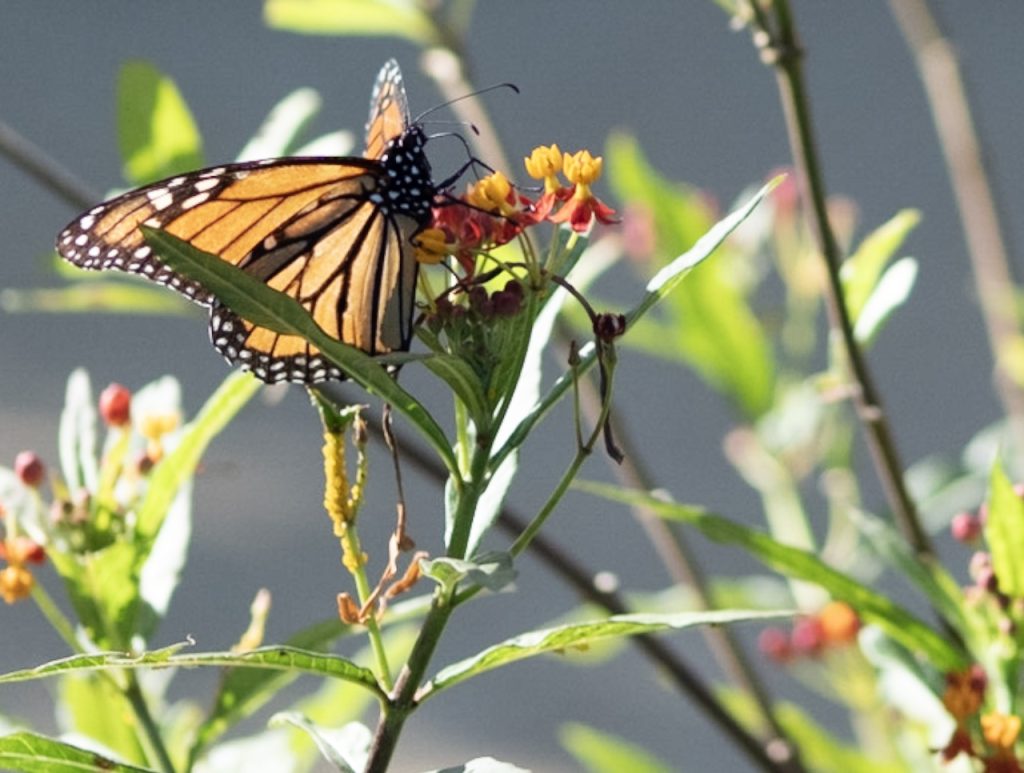
“With every wingbeat, a story of survival and transformation begins, unfolds, lifts-off, and ends.”
The Complexity of the Sunflower
A Sunflower’s face maps the spiral of existence, each petal, each seed, a complex equation set in gold.
A honeybee clings to the florets, lost in the labyrinth of pattern and purpose. The sunflower lures, holds, and in the taking, gives more than it loses.
As Charles Darwin noted in his studies of orchids, “The coadaptations of flowers and insects are among the most striking evidences of natural selection.” The sunflower’s Fibonacci spiral is no accident—it is a precise formula, honed over generations, ensuring maximum pollination efficiency.

“Beauty in nature is never accidental—it is precise, mathematical, and deeply intentional.”
A World of Quiet Wonders
Every bloom, every wingbeat, is a note in the hymn of existence. Beauty is not separate from function; it is function’s most eloquent expression.
A sunflower, streaked with fire, stands last. A final ember in a world alive with motion. The interconnectedness of life—between flower and insect, pollinator and planet—is a story still unfolding. It is a balance both delicate and unbreakable, one we must strive to protect.
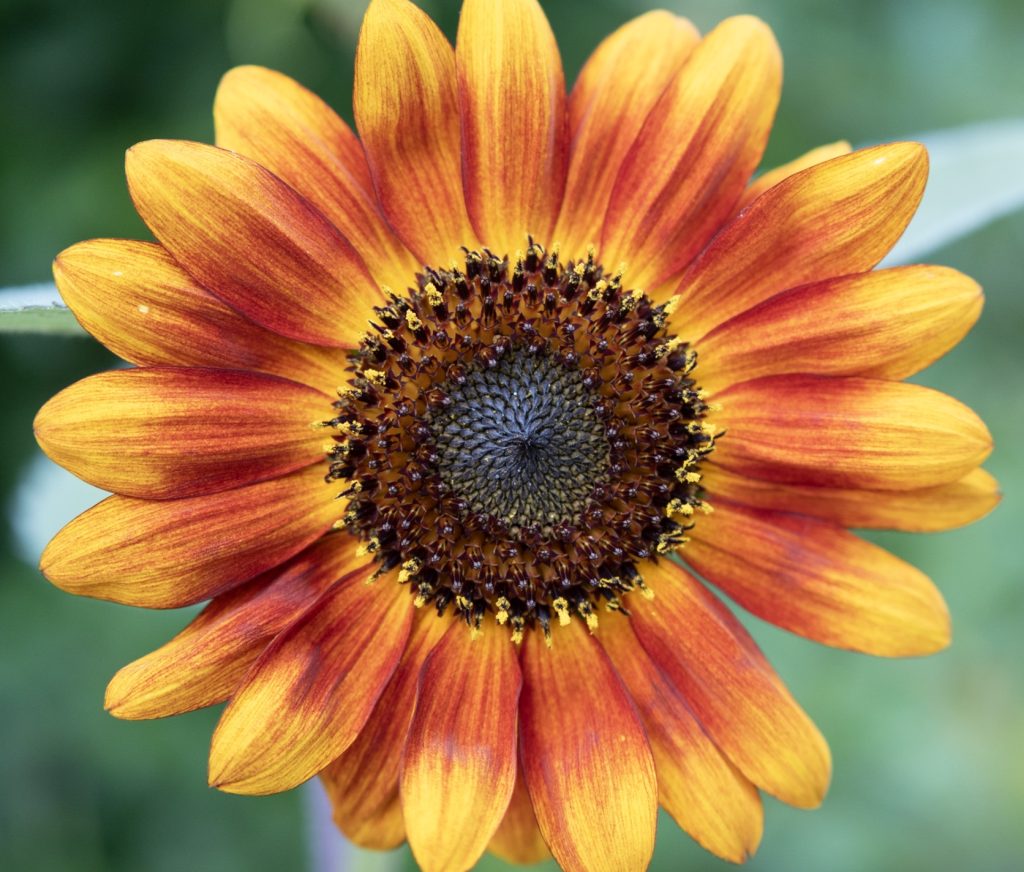
“To witness pollination is to glimpse nature’s artistry in motion—fleeting yet as eternal as it is essential.”
Learn more…
Overview of Bee Pollination and Its Economic Value for Crop Production
https://pmc.ncbi.nlm.nih.gov/articles/PMC8396518
Why are flowers beautiful?
https://www.psu.edu/news/research/story/probing-question-why-are-flowers-beautiful
The physiological and psychological relaxing effects of viewing rose flowers in office workers
